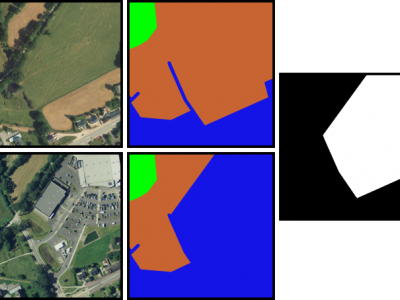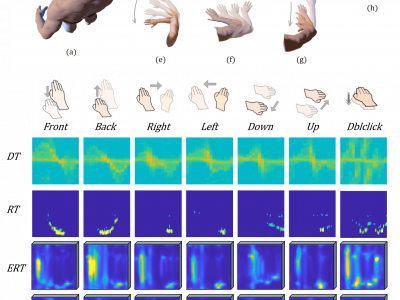*.npy
Anomaly detection plays a crucial role in various domains, including but not limited to cybersecurity, space science, finance, and healthcare. However, the lack of standardized benchmark datasets hinders the comparative evaluation of anomaly detection algorithms. In this work, we address this gap by presenting a curated collection of preprocessed datasets for spacecraft anomalies sourced from multiple sources. These datasets cover a diverse range of anomalies and real-world scenarios for the spacecrafts.
- Categories:
 334 Views
334 ViewsThis project is a instruction for the parameters of the case studies in our paper "A Behavior-Based and Fast Convergence Energy Sharing Mechanism for Prosumers Community".
two_prosumer.npy:The parameters of the case studies on communities with 2 prosumers.
ten_prosumer.npy:The parameters of the case studies on communities with 10 prosumers.
fifty_prosumer.npy:The parameters of the case studies on communities with 50 prosumers.
hundred_prosumer.npy:The parameters of the case studies on communities with 100 prosumers
- Categories:
 71 Views
71 ViewsThe Sentinel-2 L2A multispectral data cubes include two regions of interest (roi1 and roi2) each of them containing 92 scenes across Switzerland within T32TLT, between 2018 and 2022, all band at 10m resolution These areas of interest show a diverse landscape, including regions covered by forests that have undergone changes, agriculture and urban areas.
- Categories:
 1772 Views
1772 ViewsThis study proposes a more competitive and sample-efficient algorithm: Memory-GIC-PPO, specifically to address POMDPs in UAV path planning. The effectiveness of the proposed algorithm is thoroughly evaluated through simulations conducted on the Airsim platform. The results convincingly demonstrate that Memory-GIC-PPO enables the UAV to achieve optimal path planning in complex environments and outperforms the benchmark algorithms in terms of sampling efficiency and success rates.
- Categories:
 214 Views
214 ViewsThe dataset consists of undirected weighted multi-graphs stored in .pkl or .net formats. These undirected graphs form instances for the multi-trip multi-depot rural postman problem. The Multi-trip multi-depot Rural Postman Problem is a variant of the Capacitated Arc Routing Problem which is to find a set of routes for vehicles having limited capacity to traverse a set of arcs from a node called depot in an undirected graph in the least possible time. The dataset consists of instances generated by modifying instances from the literature and also real-world road networks.
- Categories:
 138 Views
138 ViewsThe dataset consists of NumPy arrays for each alphabet in Indian Sign Language, excluding 'R'. The NumPy arrays denote the (x,y,z) coordinates of the skeletal points of the left and right hand (21 skeletal points each) for each alphabet. Each alphabet has 120 sequences, split into 30 frames each, giving 3600 .np files per alphabet, using MediaPipe.
The dataset is created on the basis of skeletal-point action recognition and key-point collection.
- Categories:
 543 Views
543 ViewsDevelopment of the Complex-Valued (CV) deep learning architectures has enabled us to exploit the amplitude and phase components of the CV Synthetic Aperture Radar (SAR) data. However, most of the available annotated SAR datasets provide only the amplitude information (Only detected SAR data) and disregard the phase information. The lack of high-quality and large-scale annotated CV-SAR datasets is a significant challenge for developing CV deep learning algorithms in remote sensing.
- Categories:
 1190 Views
1190 Views
Simulation data for the following paper
DS2MA: A Deep Learning-Based Spectrum Sensing Scheme for a Multi-Antenna Receiver (K. Chae and Y. Kim)
- Categories:
 228 Views
228 ViewsRadar-based dynamic gesture recognition has a broad prospect in the field of touchless Human-Computer Interaction (HCI) due to its advantages in many aspects such as privacy protection and all-day working. Due to the lack of complete motion direction information, it is difficult to implement existing radar gesture datasets or methods for motion direction sensitive gesture recognition and cross-domain (different users, locations, environments, etc.) recognition tasks.
- Categories:
 535 Views
535 ViewsFuture mobile communication systems include millimeter wave (mmWave) frequency bands and high mobility scenarios. To learn how wave propagation and scattering effects change from classical sub 6 GHz to mmWave frequencies, measurements in both bands have to be conducted. We perform wireless channel measurements at 2.55 GHz and 25.5 GHz center frequency at velocites of 40 km/h and 100 km/h. To ensure a fair comparison between these two frequency bands, we perform repeatable measurements in a controlled environment.
- Categories:
 493 Views
493 Views







